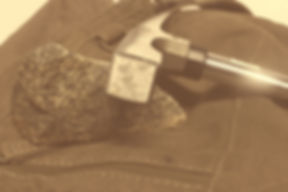
The Applications of Palaeontology in the Contemporary World: A Case Study of Fossil Sea Shells

October 2018
[X]position, Vol. 03
External Links: https://www.talkaboutx.net/xpositionvolume/3/Matthew-L.-Staitis
https://www.youtube.com/watch?v=GXWVMguxy4Q&t=924s
Figure 1: Sketch of an imaginary scene of Oriel Brook during the late Katian (not to scale), featuring the ‘Foliomena Community’ (Harper & Mitchell 1982; Renbin et al. 2010).
Abstract
This study highlights the many applications of modern palaeontology, through the lens of an examination of fossil sea shells (brachiopods) from Oriel Brook in eastern Ireland. This fauna thrived across the globe some 446 million years ago, during the Late Katian stage of the Upper Ordovician Period. Several brachiopods were identified and, for the first time, four previously undocumented genera from Oriel Brook were discovered. A number of these findings, including the discovery of Foliomena sp., confirmed with certainty that these brachiopods belong to the Foliomena fauna. A faunal list was then compiled and statistically compared to other Foliomena faunas found globally, using the specialist software package PAST [PAlaeontological STatistics]. From this statistical manipulation, these brachiopods were placed in a distinct geographical region on the Ordovician globe and at a specific relative water depth. It is from such detailed analyses that changing continental configurations and the evolution of ecosystems over deep time are deduced. This is only one of the uses of modern-day palaeontology, which can answer various questions applicable to an ever-changing contemporary world. Notably, observations of changes in biodiversity and climate over time gives us context of the impact of our actions on the world today. This study demonstrates that fossils can be used as vitally important ‘tools’ which tell a story, allowing us to open a window into the deep past, which is key in understanding our future.
